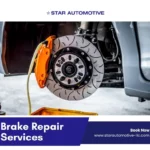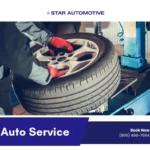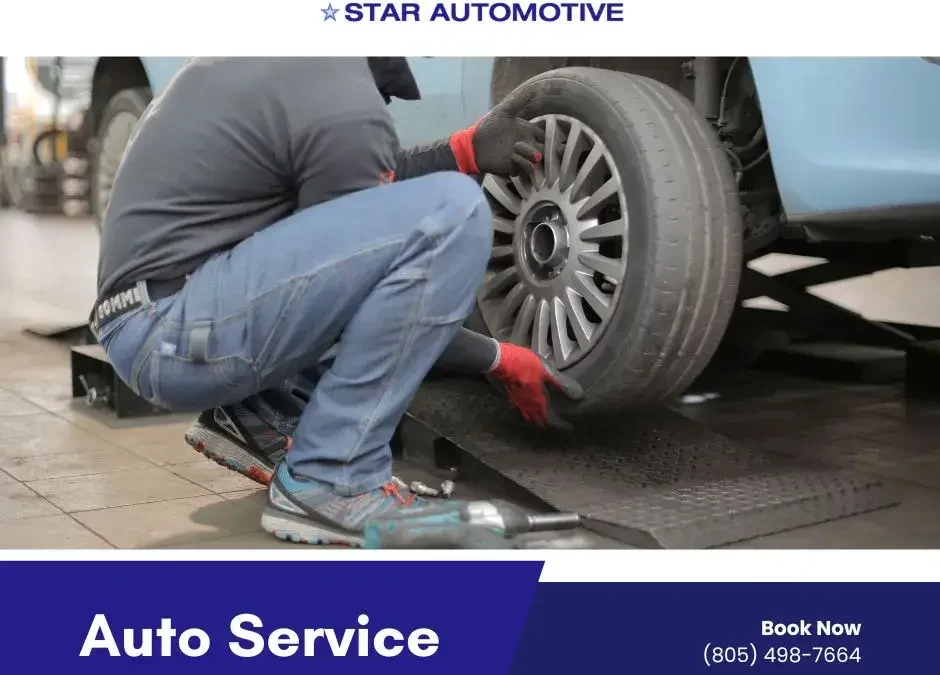
Brake System Warning Signs: When Is Brake Repair Necessary?
February 21, 2025
Regular Tire Rotations for Better Auto Service Maintenance
March 20, 2025Your vehicle’s tires play a crucial role in ensuring safety, fuel efficiency, and overall driving performance. Studies show that worn-out tires contribute to approximately 35% of vehicle-related accidents due to loss of traction and poor braking response. For owners of Asian vehicles like Toyota, Honda, Nissan, and Lexus, maintaining optimal tire condition through regular auto service is essential to maximizing their car’s lifespan and efficiency. But when should you replace your tires? Understanding the signs of wear and tear, performance impact, and recommended replacement intervals will help you make informed decisions and keep your vehicle running smoothly.
Signs That It’s Time to Replace Your Tires
1. Tread Depth Below the Recommended Level
Tread depth is one of the most important indicators of tire wear, as it directly affects traction, braking efficiency, and overall handling. In wet or icy conditions, reduced tread depth can lead to hydroplaning or loss of control, increasing the risk of accidents. In the U.S., the legal minimum tread depth is 2/32 of an inch, but experts recommend replacing tires when the tread reaches 4/32 of an inch for enhanced safety, especially in wet conditions. You can check this with the penny test—insert a penny into the tread grooves with Lincoln’s head facing down. If you can see the top of his head, your tread is too low, and it’s time for new tires.
2. Uneven Tread Wear
Uneven tread wear can indicate improper tire inflation, misalignment, or suspension issues. If you notice more wear on one side of the tire than the other, it’s crucial to address the root cause and replace the tires if necessary. Regular tire rotations (every 5,000 to 7,500 miles) can help distribute wear evenly.
3. Cracks, Bulges, or Sidewall Damage
Cracks in the rubber, bulging areas, or visible damage to the sidewalls are warning signs of structural weaknesses. These issues increase the risk of blowouts, which can be dangerous, especially at high speeds.
4. Vibrations and Unusual Noises
Excessive vibration or strange noises while driving could indicate tire imbalance, misalignment, or internal tire damage. If your vehicle feels unstable or bumpy, have your tires inspected by a professional.
5. Age of the Tires
Even if the tread appears sufficient, tires degrade over time due to environmental factors such as extreme temperatures, prolonged exposure to UV rays, and humidity. These elements can cause the rubber to harden, crack, or lose flexibility, leading to compromised traction and increased safety risks. Most manufacturers recommend replacing tires every six years, regardless of mileage, and no later than ten years from the manufacturing date. You can find the manufacturing date stamped on the tire’s sidewall as a four-digit number (e.g., 2518 means the tire was made in the 25th week of 2018).
How New Tires and Auto Service Improve Performance
- Better Traction & Handling – Fresh tires provide superior grip, essential for maintaining stability, especially in wet or icy conditions.
- Enhanced Fuel Efficiency – Worn-out tires increase rolling resistance, forcing your engine to work harder and burn more fuel.
- Improved Braking Distance – New tires reduce stopping distances, improving overall road safety.
- Smoother and Quieter Ride – Tires with adequate tread and structure minimize road noise and vibrations, making for a more comfortable drive.
Choosing the Right Tires for Your Asian Vehicle
When selecting new tires for your Toyota, Honda, or Nissan, consider popular brands like Michelin, Bridgestone, Yokohama, and Toyo, which are known for their compatibility with Asian vehicles and excellent performance.
- OEM Recommendations – Follow the manufacturer’s suggested tire specifications for size, tread type, and load capacity.
- Climate Considerations – If you drive in snowy or rainy regions, all-season or winter tires may be a better choice.
- Performance Needs – If you prioritize fuel efficiency, opt for low rolling resistance tires. For sportier driving, high-performance tires offer superior grip and handling.
Regular tire inspections and timely replacements are essential for maintaining optimal vehicle performance, safety, and efficiency. Schedule a professional tire inspection today to ensure your vehicle remains in top condition and avoid unexpected road hazards. If you notice worn tread, cracks, or unusual vibrations, don’t wait—consult a trusted auto service provider to determine the best course of action. Investing in quality tires tailored to your vehicle’s needs will not only enhance your driving experience but also extend the life of your car. Stay proactive, stay safe, and enjoy a smooth ride every time you hit the road!




